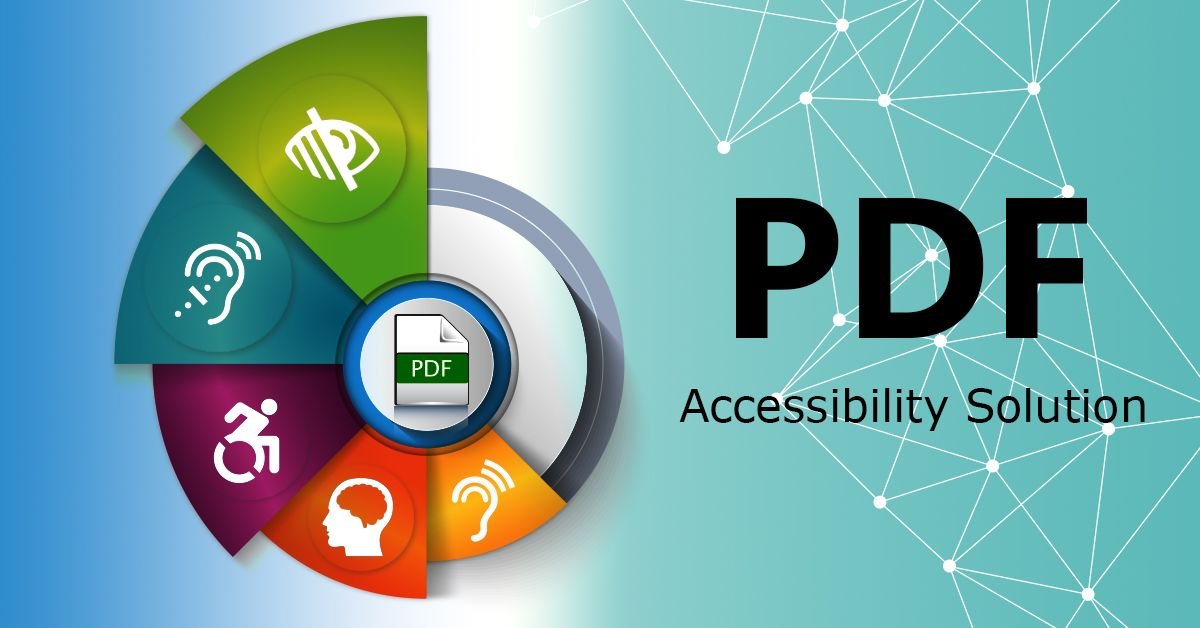In order to make PDF be accessible to all, including users with vision impairments or certain cognitive conditions, it must also be digitally accessible. The importance of PDF accessibility cannot be overstated, not just in terms of ensuring compliance, but also in terms of possibly reaching a bigger audience. If PDFs aren\’t properly marked up for accessibility, persons with impairments will have navigational challenges, making it impossible for them to get the information they need.
The technique of adding HTML markup to a PDF document to improve readability and operability for assistive technology users is known as PDF remediation. Let\’s have a look at some of the most frequent PDF accessibility issues and how to fix them in this blog.
The most common PDF accessibility problems and their solutions
- PDF is Untagged:A tagged PDF document is one that has a hidden structure that splits the document into sections and allows a screen reader to recognize the information. When a PDF is properly organised, the screen reader can readily read the material, and users can understand it. Screen readers and other assistive technologies cannot detect the sequence of material in untagged or unstructured PDF documents, causing the content flow to be distorted. Section 508 and WCAG 2.0 Success Criterion 1.3.1 both prohibit untagged PDFs. To prevent the possibility of a lawsuit, it is critical to resolving this issue.
- Lack of Meaningful Title:A PDF document without a meaningful title is inaccessible since the title implies the subsequent content. When a visually impaired person searches for a certain document or material, they must go through the titles to find the correct one. As a result, people who use screen readers or other accessibility tools to view the information will be unable to recognize a PDF document that lacks a title.
- Undefined Language of PDF Document:
When language is left unclear, assistive technologies become stuck and are unable to read out the text. As a result, it is critical to specify the document language for accessibility purposes so that screen readers can load the relevant pronunciation rules and browsers can show characters and scripts appropriately. Even bilingual texts are difficult to access because assistive technologies are unable to accurately pronounce some of the words with numerous language preferences. Because each language has various pronunciation norms and tones, it is preferable to create unilingual publications. - An image without alternative text:Images cannot be identified by screen readers. As a result, each picture must have a text alternative to fulfil the same function. People with visual impairments will be unable to recognise the existence of an image and what the picture signifies if a document contains an image without alternate language.
- No bookmarks in long PDF documents:Bookmarks are used to help you browse and discover information in a PDF document. If a long document lacks bookmarks, persons with cognitive impairments will struggle to go to a specific area of the document to obtain the necessary information.
- Reading order error:A PDF document is navigated using tabs. To preserve the visual flow of a page, there is a typical tab order—left to right, top to bottom. In order for keyboard and assistive technology users to traverse a document, a logical structure must be established. Incorrect reading order is a crucial problem that prevents users from fully grasping the context and navigating effectively.
- Undefined Table Header:A person with visual impairments will be unable to understand the notion of a table unless suitable table headers and tags are used. Well-defined table headers, rows, and column markups are critical for accessibility—well-marked tables are recognized by assistive technology, helping users to grasp the context.
- Using Image-Only Content:The content of scanned PDF documents is not available in text format, but rather as a collection of photos. Scanned PDFs are inaccessible to those who use assistive technology because pictures are inaccessible to screen readers. PDFs containing image-only content prevent users from browsing and searching through the document.
Conclusion:
Follow the Web Content Accessibility Guidelines to learn more about these regularly found PDF remediation issues.
If you\’re having trouble dealing with PDF accessibility issues, leave it to us. PDF Accessibility Services are speedy and cost-effective for huge numbers of documents as well as small/one-time requests.
Write to us at info@dtplabs.com for a quick quote.

